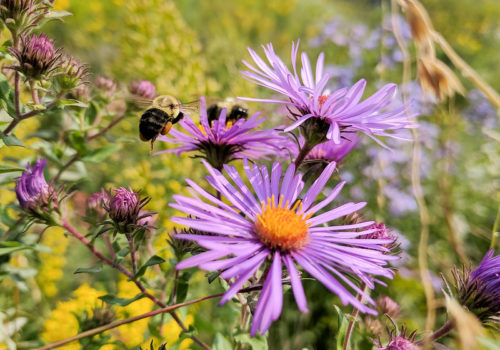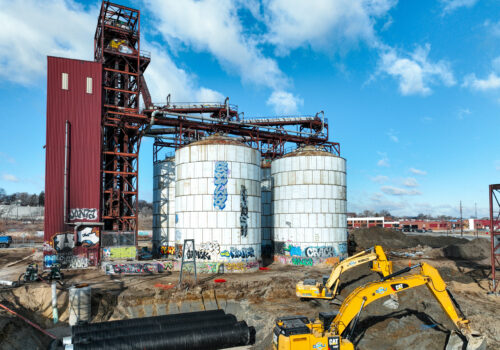News / April 08, 2020
Four Things You Can Do to Celebrate Earth Day This Year


On April 22, 2020, the world will celebrate the 50th annual Earth Day. Since 1970, Earth Day has helped raise awareness and motivate people and governments to take action on various environmental issues including water conservation, deforestation, climate change, habitat loss and pollution. Communities around the world typically gather to recognize this day with marches and festivals as well as community cleanups and tree planting events.
Unfortunately, this year all public events have been canceled due to concerns about the COVID-19 pandemic. While it is hard for many of us to be separated from our communities and unfortunate that so many events have been canceled, there are still things that each of us can do to recognize and celebrate Earth Day, while still practicing appropriate social distancing. The suggestions below are just a few ideas for ways to do something meaningful to protect habitat and water quality in our watershed.
Get Outside
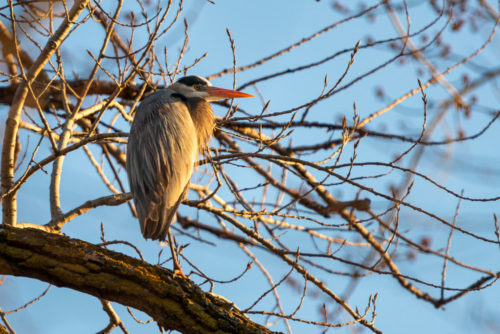
Probably the easiest way to celebrate Earth Day is to get outside and enjoy nature. This may mean going out for a walk, spending time in your yard or exploring a local park. We are lucky to still be able to enjoy the outdoors, and this is key to our physical and mental health now more than ever.
Spring in Minnesota is a joyful season of warming days, birds returning from their wintering grounds, animals becoming more active, buds popping and greenery emerging from the soil. What a great time to get out and observe all the wonders of the season.
While you are out there, check out one of the many Citizen Science apps like FrogWatch, Nature’s Notebook or iNaturalist. These and many other apps direct your attention to specific natural phenomena and ask you to make observations about what you see or hear. You may be looking for whether a Red Maple tree has leaves yet or notice whether particular migratory birds are present and record your data. By submitting your own observations, you are contributing to data used by scientists to better understand seasonal changes, biodiversity and environmental quality.
Do Your Own Earth Day Cleanup
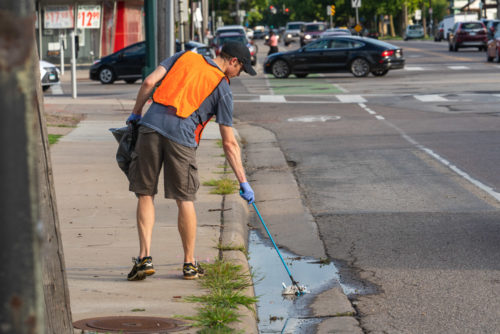
Another great way to get outside and do something helpful for the environment is to do your own neighborhood cleanup. Cities and environmental groups had to cancel large organized cleanup events on Earth Day this year, but that doesn’t mean that you can’t head out on your own or with other members of your household to make a dent in the trash, sediment, and leftover salt that has accumulated over the winter.
Picking up trash and other debris has many benefits. Not only is it unsightly, but it can be harmful to wildlife if they ingest it or become caught in it. It also pollutes our local waterways when it gets pushed into storm drains and then into our rivers and lakes, untreated.
So, grab a trash bag and some gloves and get outside. You could clean your block, a neighborhood park or a nearby shoreline. Use social media to share photos and challenge your friends and neighbors to get out and do the same thing. Our partners over at Friends of the Mississippi River have put out this helpful guide for doing your own Earth Day cleanup.
Adopt a Storm drain
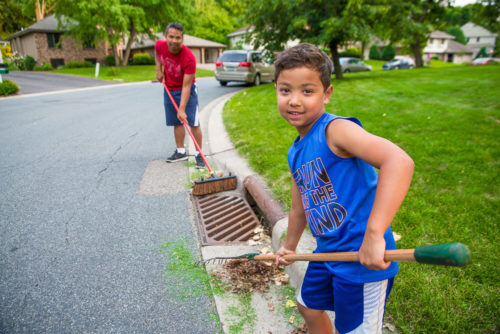
Another relatively easy thing to do to protect water quality in our lakes and streams is to adopt a storm drain. Last year, the Adopt-a-Drain program was launched metro-wide. Since then, more than 10,000 storm drains have been adopted. This is a huge step in protecting local waterways from pollutants that accumulate in the street, clog up storm drains, and get washed into rivers and lakes.
When you sign up to adopt a drain, you choose a storm drain (or a few) to take responsibility for keeping clean. It’s best to choose one that’s close to where you live or work as you will need to visit it about twice a month to clean it out. Each visit will generally take 15 minutes or less. After cleaning out your storm drain, you are asked to measure the amount of trash and debris that you collected and enter that data into the website. Over time, it’s neat to see how much pollution you are keeping out of local waterways.
It may feel like keeping one storm drain clean is too small to make a difference for local water quality, but when you consider the fact that thousands of people across the metro area are cleaning their storm drains, you realize that you are part of a much bigger effort that is actually making a big difference. Check out the Adopt-a-Drain website for more information about how to adopt, clean and record data from your storm drain and find out more about the collective impact of the program.
Replace Some Turf with Native Plants
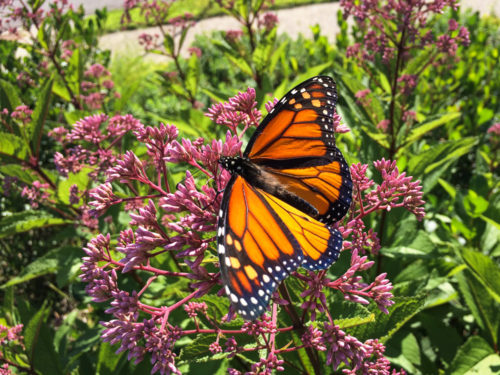
Turfgrass is ubiquitous throughout the metro area. While it provides a nice surface for playing and sitting outdoors, our traditional lawns have very short root systems that do not pull water very far down into the soil, meaning that much of the rain and snowmelt that falls on turf ultimately runs off into storm drains. This stormwater runoff is a significant source of pollution in the Mississippi River and other local waterbodies.
One way to protect local water quality is to encourage rain and snowmelt to soak into the ground where it falls. We recommend that homeowners find an area in their yards where they can swap out some turf grass for native plants. Native plants tend to have deep root systems that break up the soil and create pathways for water to soak deep into it, filtering out pollutants and eventually recharging groundwater.
Native plants also provide much-needed habitat for pollinators and other wildlife. The state of Minnesota is currently running a grant program, called Lawns to Legumes, that is providing funds for homeowners and entire neighborhoods to create more pollinator-friendly yards in order to support threatened pollinator populations across the state. Educational materials, online learning and coaching are available to support people in changing over some of their landscapes to become more pollinator-friendly.
Whether you are looking to add colorful flowering plants and shrubs to your yard or establishing a pollinator-friendly “bee lawn,” local garden stores and nurseries can also be a good source of native plants.
We hope that you will spend some time outside appreciating nature this Earth Day and hopefully you will do something meaningful to take care of our environment while you are out there. We would love to hear from you about what kinds of things you do to recognize this momentous anniversary of the first Earth Day. Please share your actions on social media and use the hashtag #MWMOgoodneighbor.
Native Plant Growers
Ready to plant some native perennials? We curated a list of Minnesota (and nearby) growers and retailers who offer native plants. Email us at contacts@mwmo.org if you know of any we should add to the list!
- Blazing Star Gardens
- BluPrairie
- Dragonfly Gardens
- Ecoscapes
- Glacial Ridge Growers
- Ion Exchange
- Kinnickinnic Natives
- Landscape Alternatives, Inc.
- Minnesota Native Landscapes
- Morning Sky Greenery
- Mother Earth Gardens
- Natural Shore
- Naturally Wild
- Out Back Nursery
- Prairie Moon Nursery
- Prairie Restorations, Inc.
- Shooting Star Native Seeds
- Sogn Valley Farm
Special thanks to Beth Brombach.
